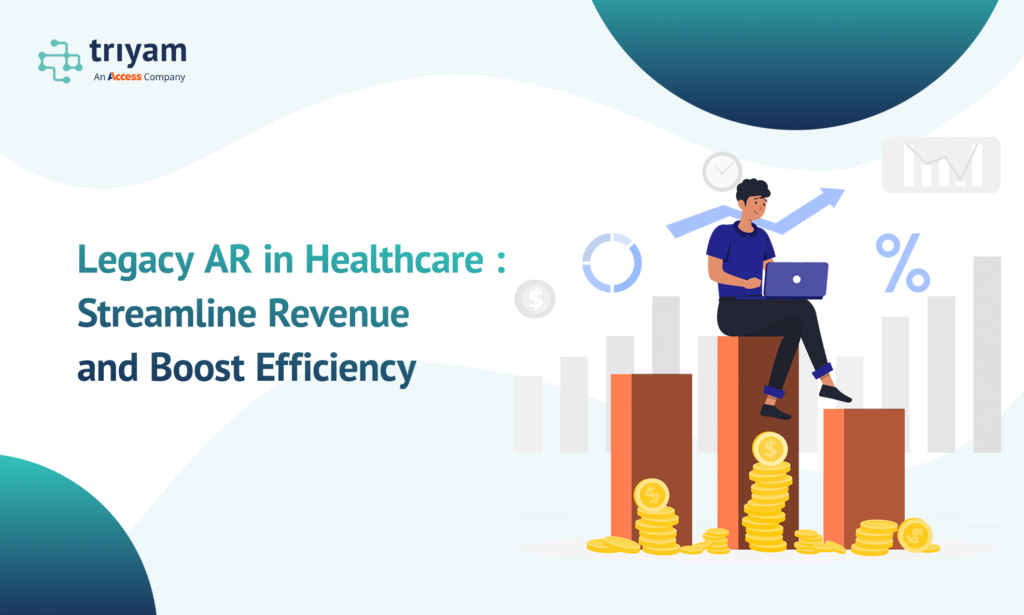Does your healthcare organization struggle with outstanding patient balances from past services?
Well, you’re not alone. Legacy AR (Accounts Receivable) are a significant challenge for many providers, but fear not! We have got you covered. In this guide we will cover all the significant aspects of legacy AR in healthcare, offering solutions to optimize your revenue cycle and improve financial health.
What is Legacy AR in Healthcare?
Legacy accounts receivable in healthcare refer to outstanding balances owed to a healthcare provider by patients or third-party payers for services rendered in the past. These balances might date back several months or even years and can be a major financial challenge for healthcare organizations to function smoothly.
Causes of Legacy AR Accumulation:
- Insurance Processing Delays: Processing insurance claims can be time-consuming, particularly when dealing with issues related to coding, documentation, or eligibility. Such delays can result in outstanding balances remaining on the books for extended periods.
- Patient Responsibility: Patients often have co-pays, deductibles, or coinsurance amounts they are responsible for paying. Instances where patients delay or default on their payments can lead to the accumulation of outstanding balances.
- Complex Billing Practices: Healthcare billing is inherently complex due to various factors such as multiple insurance plans, coordination of benefits, and different billing systems. Errors or inefficiencies in billing processes can consequently cause delays or result in unresolved claims.
- Changes in Payer Policies: Amendments in payer policies or regulations can affect reimbursement rates or require additional documentation, leading to delays in payment.
- Write-offs and Adjustments: Healthcare providers may sometimes write off or adjust balances due to contractual agreements with payers or as a result of charity care policies. However, incorrect application or oversight of these adjustments can lead to unresolved balances persisting.
How to Move Beyond Legacy Systems:
When transitioning from an outdated financial system to a new one, it’s common to encounter outstanding accounts receivable (AR) records that haven’t been fully converted, lacking detailed line-item information in the new software. While maintaining the legacy system is one approach for collectors to manage the winding down of AR, it often proves more expensive than archiving, primarily due to the high vendor support fees associated with sustaining a full-production billing system. Streamlining your operations with modern solutions is key to overcoming such challenges.
Strategies for Managing Legacy AR:
- Regular Reconciliation: Healthcare organizations should regularly reconcile their accounts receivable to identify and address outstanding balances promptly.
- Follow-Up Processes: Implementing comprehensive follow-up procedures, including reminders, phone calls, and letters, can facilitate the collection of outstanding balances from both patients and payers.
- Revenue Cycle Management: Optimize revenue cycle management processes to minimize billing errors, improve claims submission, and expedite reimbursement.
- Financial Assistance Programs: Offering financial assistance programs for patients who are unable to pay their bills can help reduce the burden of legacy accounts receivable while supporting community health.
- Technology Solutions: Utilizing technology such as billing software, predictive analytics, and automated reminders can streamline accounts receivable management and enhance collection efforts.
Benefits of Addressing Legacy AR:
By tackling legacy AR effectively, your healthcare organization can:
- Improve Financial Health: Reduce outstanding balances and streamline cash flow.
- Enhance Patient Satisfaction: Proactive collection efforts and financial assistance programs improve patient experience.
- Ensure Sustainable Revenue Cycle: Optimize processes and minimize disruptions for long-term financial stability.
The Power of Integrated Legacy AR Management:
Incorporating account receivable (AR) management into your legacy data strategy unlocks additional benefits:
- Cost Reduction in System Maintenance: This initiative effectively reduces expenses linked with supporting and maintaining legacy systems, optimizing resource allocation.
- Enhanced Cybersecurity Defense: Through the integration of AR management, organizations fortify their defenses against cybersecurity threats, safeguarding sensitive financial data from potential breaches.
- Compliance and Record Retention Assurance: It guarantees adherence to record retention requirements and regulatory compliance standards, thereby mitigating risks associated with data loss or non-compliance penalties.
- Facilitated Account Resolution Amid System Transitions: Incorporating AR management streamlines account resolution processes during system transitions, ensuring seamless continuity of financial operations and minimizing disruptions.
Ready to Integrate AR in Legacy Systems and Boost Your Profits?
Contact us today for a free consultation on tailored solutions to manage your legacy AR effectively. Alternatively, email us at info@triyam.com to discuss your specific needs. Don’t let outstanding balances hinder your financial performance. Take control of your legacy AR and unlock a more sustainable future for your healthcare organization!

